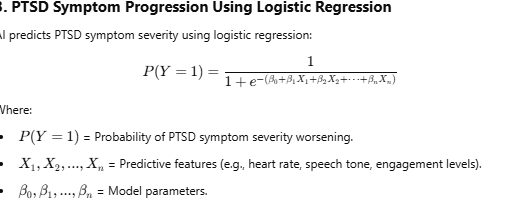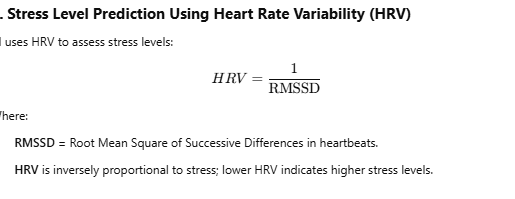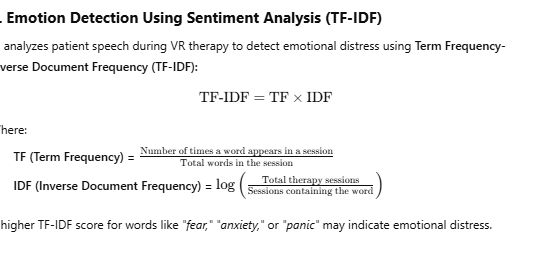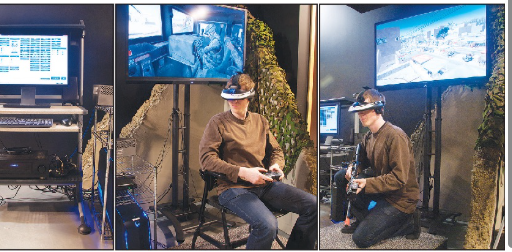The Role of AI in Virtual Reality (VR) Therapy for PTSD Patients
 Tulasi Polineni
Tulasi Polineni
Introduction
Post-Traumatic Stress Disorder (PTSD) affects millions of individuals worldwide, often resulting from traumatic experiences such as combat, accidents, abuse, or natural disasters. Traditional PTSD treatments, such as cognitive-behavioral therapy (CBT) and medication, have proven effective, but they often come with challenges like accessibility, patient adherence, and the subjective nature of therapy progress assessment.
Artificial Intelligence (AI) and Virtual Reality (VR) have emerged as transformative technologies in mental health care, offering new and innovative ways to treat PTSD. AI-powered VR therapy provides immersive, controlled environments where patients can safely confront and process their trauma under the guidance of AI-driven virtual therapists and real-world clinicians. This article explores the role of AI in VR therapy for PTSD patients, its benefits, challenges, and future prospects.

Understanding VR Therapy for PTSD
VR therapy, also known as Virtual Reality Exposure Therapy (VRET), is a form of exposure therapy that immerses patients in computer-generated environments replicating real-life traumatic scenarios. This method allows patients to confront their fears in a controlled, safe, and gradually adjustable setting.
Traditional exposure therapy often relies on imagination or verbal recounting of trauma, which may not be effective for all patients. In contrast, VR therapy provides a highly immersive and realistic experience, making it easier for patients to engage with the treatment.

The Role of AI in Enhancing VR Therapy for PTSD
AI significantly enhances VR therapy by making the experience more personalized, adaptive, and data-driven. Here are the key ways AI is integrated into VR therapy:
1. Personalized Treatment Plans
AI algorithms analyze patient history, psychological assessments, and biometric data to customize therapy sessions. By monitoring real-time reactions, AI can adjust the VR environment's intensity, pace, and exposure level to match the patient’s comfort level, ensuring a tailored therapeutic experience.
2. Real-Time Emotion and Stress Detection
Using AI-powered facial recognition, speech analysis, and biometric sensors (such as heart rate and skin conductivity), VR therapy systems can assess a patient’s emotional state in real time. If signs of severe distress are detected, the system can pause the session, reduce the intensity, or provide calming interventions.
3. AI-Driven Virtual Therapists
AI-powered virtual therapists can simulate human-like interactions, guiding patients through therapy sessions with empathy and responsiveness. These virtual therapists can:
Ask questions and provide feedback based on patient responses.
Adjust therapy intensity in real time.
Encourage patients to confront their fears while maintaining a safe environment.
This reduces reliance on human therapists, making therapy more accessible and cost-effective.

4. Automated Progress Tracking and Data Analysis
AI can analyze patient performance and engagement over multiple sessions, identifying improvement patterns or potential setbacks. By tracking progress through objective data, clinicians can make more informed treatment decisions.
5. Natural Language Processing (NLP) for Communication
AI-powered NLP enables virtual therapists to engage in meaningful conversations with patients. It can analyze speech patterns to detect signs of distress, improvement, or hesitation, allowing for a more dynamic and responsive therapeutic experience.
6. AI-Generated Adaptive Scenarios
AI can dynamically modify VR environments based on real-time patient feedback. For instance, if a combat veteran in therapy is showing signs of stress, AI can adjust background noises, reduce the intensity of war scenes, or introduce grounding techniques to maintain therapy effectiveness without overwhelming the patient.

Benefits of AI-Driven VR Therapy for PTSD
AI-enhanced VR therapy offers several advantages over traditional treatment methods:
Increased Engagement and Retention
- The immersive nature of VR therapy makes sessions more engaging, improving patient retention rates compared to traditional talk therapy.
Objective Data Collection
- AI can analyze physiological and behavioral data to provide objective insights into a patient’s progress, reducing reliance on self-reported symptoms.
Scalability and Accessibility
- AI-powered VR therapy can be deployed remotely, allowing PTSD patients in rural or underserved areas to receive treatment without needing to visit a therapist in person.
Safe and Controlled Exposure Therapy
- Patients can confront trauma in a controlled environment where exposure levels can be adjusted to prevent overwhelming distress.
Cost-Effectiveness
AI-driven therapy reduces the demand on human therapists, lowering the cost of treatment and making mental health care more affordable and scalable.

Challenges and Limitations
Despite its benefits, AI-driven VR therapy for PTSD faces several challenges:
Data Privacy and Ethical Concerns
- Collecting and storing sensitive patient data requires strict security measures to prevent unauthorized access and misuse.
Technology Accessibility
- High-quality VR equipment and AI-powered software may be expensive, limiting access for low-income patients and smaller healthcare providers.
Lack of Human Empathy in AI Therapists
- While AI-driven virtual therapists can simulate empathy, they cannot fully replace the emotional intelligence and nuanced understanding of human therapists.
Risk of Overexposure
- Poorly designed AI algorithms may push patients too quickly into distressing situations, potentially worsening symptoms rather than aiding recovery.
The Future of AI-Driven VR Therapy for PTSD
The future of AI-powered VR therapy for PTSD looks promising, with advancements in the following areas:
Enhanced AI Emotional Intelligence: AI models are becoming better at recognizing and responding to human emotions, improving virtual therapist interactions.
5G-Powered Remote Therapy: Faster internet speeds will enable high-quality VR therapy experiences for remote patients.
Wearable Integration: Smartwatches and biometric devices will provide real-time physiological data, enhancing therapy personalization.
AI and Blockchain for Data Security: Blockchain technology could secure sensitive therapy data, ensuring patient confidentiality.

Conclusion
AI-driven VR therapy is revolutionizing PTSD treatment by providing immersive, adaptive, and data-driven therapeutic experiences. By combining AI's analytical power with VR's realism, patients can confront and process their trauma in a controlled and personalized manner. While challenges remain, ongoing technological advancements promise a future where AI-enhanced VR therapy becomes an integral part of PTSD treatment, improving accessibility, effectiveness, and patient outcomes. As research and innovation continue, this transformative approach could redefine the landscape of mental health care for PTSD patients worldwide.
Subscribe to my newsletter
Read articles from Tulasi Polineni directly inside your inbox. Subscribe to the newsletter, and don't miss out.
Written by
